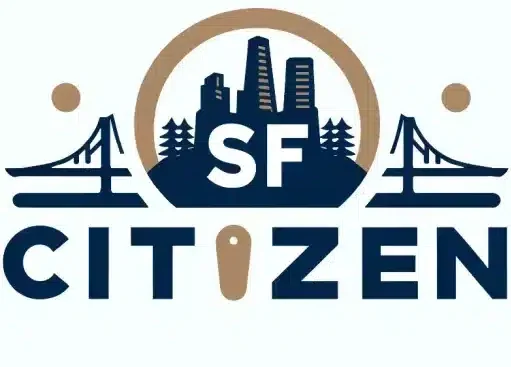The Lefty O’Doul Bridge, spanning 193 feet and rising 86 feet above Mission Creek, has been a vital part of San Francisco’s urban landscape since its opening in 1933. This bascule bridge, designed by Joseph Strauss, the chief engineer of the Golden Gate Bridge, serves as a crucial link between the China Basin and Mission Bay neighborhoods.
In This Article
Key Points
- The Lefty O’Doul Bridge plays a significant role in connecting San Francisco’s urban landscape.
- It functions as a bascule bridge and stands as a piece of historical infrastructure.
- The bridge’s proximity to major attractions impacts local and tourist mobility.
The Historical Context of Lefty O’Doul Bridge
The Bridge’s Namesake: Lefty O’Doul and Baseball History
The bridge was renamed in 1980 to honor Francis “Lefty” O’Doul, a San Francisco-born baseball player and longtime manager of the San Francisco Seals. O’Doul’s influence on baseball and his legacy in the city are deeply intertwined with the bridge’s history.
Design and Construction: Joseph Strauss and Engineering Marvels
As the designer of the Lefty O’Doul Bridge, Joseph Strauss’s expertise in bascule bridge engineering is evident in this mechanical marvel. The bridge’s architectural and engineering significance is often overshadowed by Strauss’s more famous work on the Golden Gate Bridge.
Mission Bay and China Basin: Evolution of a Waterfront
The historical development of the Mission Bay and China Basin areas is closely tied to the Lefty O’Doul Bridge. The bridge has played a crucial role in the transformation and accessibility of these neighborhoods, facilitating their growth and connection to the rest of the city.
The Bridge Today: Infrastructure and Urban Development
Retrofitting and Modernization Efforts
To maintain the bridge’s functionality and safety, several retrofitting projects have been undertaken over the years. These modernization efforts are essential in preserving this historical structure while ensuring it meets the demands of contemporary urban life.
The Bridge as a Gateway to Oracle Park and Mission Bay
The Lefty O’Doul Bridge serves as a vital link to Oracle Park, home of the San Francisco Giants. On game days and during events, the bridge supports the flow of fans, making it an integral part of the stadium’s accessibility.
Pedestrian Access and Public Transportation Integration
The bridge offers pedestrian pathways and accessibility features, making it a friendly option for those on foot. Its integration with San Francisco’s public transportation network, including various Bay Area transit options, further enhances its role in the city’s connectivity.
Cultural and Touristic Significance
The Bridge in the Context of San Francisco Landmarks and Tourism
As one of San Francisco’s iconic landmarks, the Lefty O’Doul Bridge holds a special place among the city’s attractions. Its appeal to tourists interested in urban exploration and historical infrastructure is undeniable, drawing visitors from around the world.
Waterfront Attractions and Urban Exploration Opportunities
The bridge’s location near numerous waterfront attractions makes it an ideal starting point for urban exploration. With its pedestrian access, the bridge encourages visitors to discover the surrounding areas on foot, immersing themselves in the city’s vibrant atmosphere.
The Bridge’s Role in the San Francisco Bay Area’s Infrastructure
Major Roads, Bridges, and San Francisco’s Transportation Network
The Lefty O’Doul Bridge interacts with major roads and bridges in the San Francisco Bay Area, forming a crucial component of the city’s overall infrastructure and transportation planning. Its role in managing traffic flow and connecting neighborhoods cannot be overstated.
Enhancing San Francisco’s Urban Connectivity
By improving urban connectivity and mobility in San Francisco, the Lefty O’Doul Bridge contributes to the city’s overall accessibility. It facilitates access to key areas like Mission Bay and the San Francisco Bay Area, making it an essential part of the city’s urban fabric.
FAQ
What is the historical significance of the Lefty O’Doul Bridge?
The Lefty O’Doul Bridge, opened in 1933, is a historical bascule bridge designed by Joseph Strauss, the chief engineer of the Golden Gate Bridge. It was renamed in 1980 to honor San Francisco-born baseball player and manager Lefty O’Doul, and has played a significant role in the development of the China Basin and Mission Bay neighborhoods.
How does the Lefty O’Doul Bridge function as a bascule bridge?
As a bascule bridge, the Lefty O’Doul Bridge employs a counterweight system to lift the central span, allowing boats to pass underneath. This engineering marvel, designed by Joseph Strauss, showcases the ingenuity and functionality of early 20th-century bridge design.
What attractions are accessible via the Lefty O’Doul Bridge?
The Lefty O’Doul Bridge provides access to numerous attractions, including Oracle Park (home of the San Francisco Giants), the Mission Bay neighborhood, and various waterfront destinations. Its pedestrian pathways make it an ideal starting point for exploring the surrounding areas on foot.
How does the Lefty O’Doul Bridge integrate with San Francisco’s public transportation?
The bridge is well-integrated with San Francisco’s public transportation network, connecting with various Bay Area transit options. Its pedestrian access and proximity to public transportation hubs make it a convenient choice for those relying on public transit to navigate the city.
What are the future plans for the Lefty O’Doul Bridge in terms of retrofitting and modernization?
Ongoing retrofitting and modernization projects aim to preserve the Lefty O’Doul Bridge’s functionality and historical value. These efforts ensure that the bridge can continue to serve the city’s needs while maintaining its iconic status as a piece of San Francisco’s infrastructure heritage.

